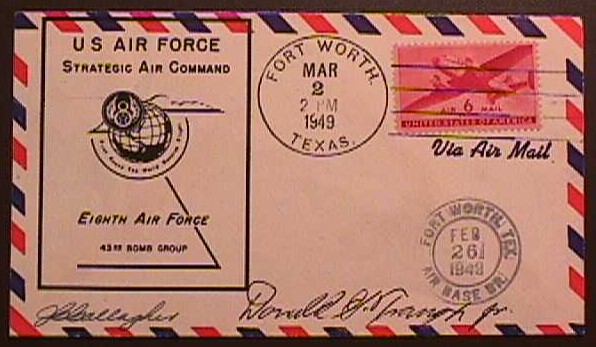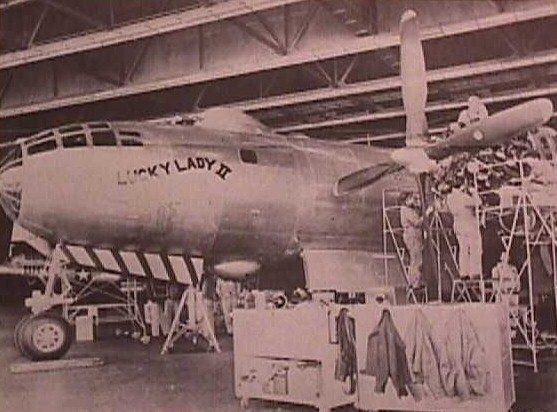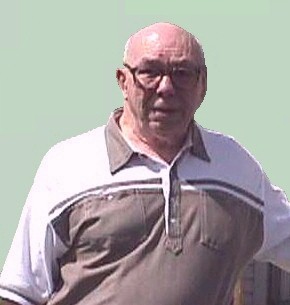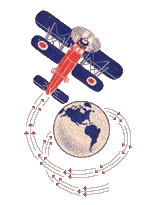Round-the-World Flights
Lucky Lady II Non-Stop Round-the-World Flight
Page 3m (rev: 1001)
| Flown Cover | Autographed Photo | Crew Congradulations | Plane | Donald Traugh Jr. |
|---|---|---|---|---|

|

|

|

|

|

Lucky Lady II, B-50A Superfortress
WW-II was over. In June 1948 the Soviet Union blocked land access to Berlin. Allied airplanes
struggled to keep the city supplied by air through the Berlin Airlift. The Soviets were rebuilding
their forces and tightening their grip over most of Eastern Europe. The coal war had begun.
Air Secretary, Stuart Symington, Generals Vandenberg and LeMay wanted to demonstrate to the world
that distance and geographical barriers no longer offered sanctuary from airpower. Air Force General
Curtis E. LeMay had taken over the Strategic Air Command (SAC) in October 1948. He immediately
began to reorganize and rebuild it and realized it was important to showcase SAC's capabilities, both
to discourage Soviet aggression and to win the support of a war-weary US public reluctant to spend
heavily on peacetime forces. A military flight round-the-world would be proof that the US Air Force
was capable of projecting air power anywhere in the world.
Refueling during a non-stop round-the-world mission was the main challenge. The in-flight
refueling system available in 1949 was called the "drogue" system. It involved one airplane's
letting out a cable which the other grabbed and brought on board. A hose attached to the cable then
was reeled in and connected at one end to the tanker's system and at the other to the receiver's
tank. Gravity did the rest. Since this refueling process was best accomplished in daylight, it meant
that the scheduling of four hookups had to be spaced about equally along the route to occur in the
morning hours. Accordingly, SAC dispatched 4 pairs of KB-29M tankers to existing US bases at Lajes
Field in the Azores, Dhahran Field in Saudi Arabia, Clark Field in the Philippines, and Rogers Field
in Hawaii. Several of the off-the-shelf B50s were moditfied as in-flight fuel receiver aircrafts,
B-50A's.
The B-50A, Global Queen was selected as the primary aircraft for this round-the-world mission
with two B-50A back-ups, Lucky Lady II and Lone Ranger. Global Queen commanded by Lt. Jewell took
off from Carswell AFB, Fort Worth, TX on February 25, 1949 but engine troubles forced it to abort the
mission and land in the Azores. Lucky Lady II then departed from Carswell on February 26, 1949. All
its crew, except for Parmalee were with the SAC 63d Bomb Squadron, 43d Bomb Group.
Capt. James G. Gallagher Aircraft Commander
1st Lt. Arthur M. Neal Second pilot
Capt. James H. Morris Co-pilot.
Capt. Glenn E. Hacker Navigator
1st Lt. Earl L. Rigor Navigator
1st Lt. Ronald B. Bonner Radar Operator
1st Lt. William F. Caffrey Radar Operator
Capt. David B. Parmalee Crew Chief Engineer
TSgt. Virgil L. Young Flight Engineer
SSgt. Robert G. Davis Flight Engineer
TSgt. Burgess C. Cantrell Radio engineer
SSgt. Robert R. McLeroy Radio Engineer
TSgt. Melvin G. Davis Gunner (refueling)
SSgt. Donald G. Traugh Jr Gunner (refueling)
The "Lucky Lady II" flew non-stop round-the-world from February 26th to March 2, 1949
covering 23,452 miles in 3D 22H 1M with 4 in-flight refuelings, over the Azores, Saudi Arabia, the
Philippines and Hawaii. Sadly, after refueling, the KB-29M tanker returning to Clark AFB in the
Philippines crashed, killing Capt. Fuller and his crew.
After the flight, the Lucky Lady II crew showed severe signs of fatigue. Each crew member was
awarded the Distinguished Flying Cross for the mission. Together, they later received the MacKay
Trophy, given annually for the most meritorious Air Force flight of the year. The US Air Force
successfully demonstrated that its land-based bombers could reach any spot on Earth, that no city,
should war come, would be safe from their attack.
The Lucky Lady II was all but destroyed in an accident not long after her round-the-world flight.
Her fuselage was salvaged and toured for a time as a recruiting exhibit before going on display at
the air museum in Chino, CA.
Library of Articles detailing facts about this noteworthy Round-the-World flightFort Worth Star-Telegram (Feb 25, 2004)
Above Article - Continued
